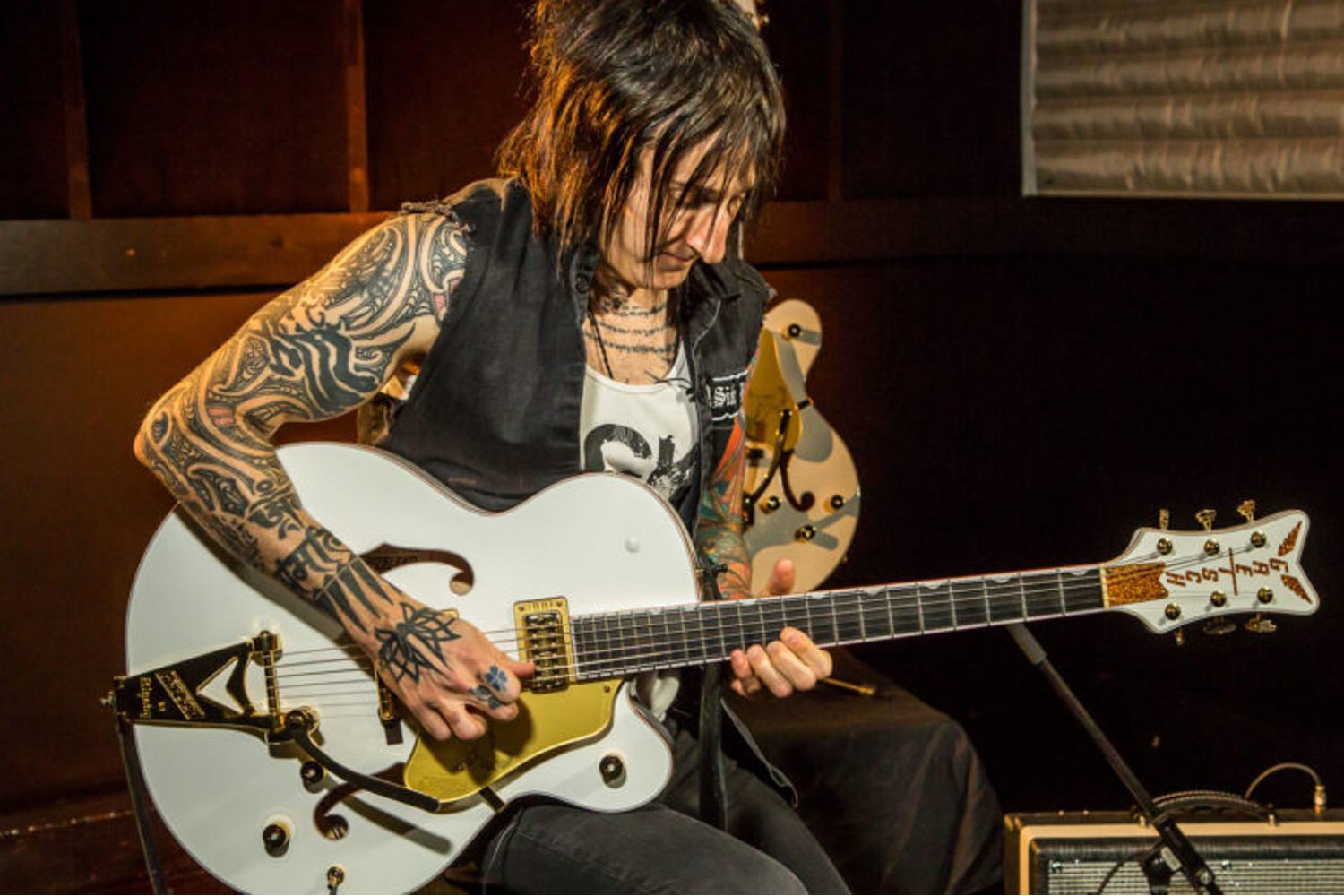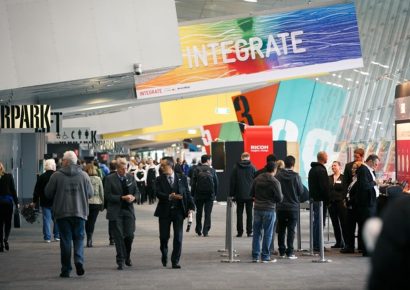We chat with him taking a look at the development specific processes involved in the creation of his signature Gretsch models
Richard Fortus has been slinging enviably gorgeous guitars since his earliest days, and those of us who caught the Guns N’ Roses Not In This Lifetime tour a few years back saw quite a few of them throughout the night, from beautiful hollow-body Gretsches to boutique custom pieces. So when Fortus puts his name on a piece of gear, you know it’s not going to be some off-the-shelf product with his name stamped into the truss rod cover.
Read up on all the latest interviews, features and columns here.
Fortus’ new Bigsby-equipped G6636T and V-Stoptail-styled G6636 Gretsch signature models both feature chambered solid Spruce centre blocks in a departure from the Gretsch double-cut, informed by those decades of experience and tens of thousands of hours with some of the finest guitar designs in the world.
Check out the interview below to hear from Fortus himself on the inception and creation of his signature Gretsch guitar.
So Gretsch comes to you and says ‘what do you want?’ Where do you start?
I actually went to Gretsch!. I was at a NAMM show and the product manager, Jason Barnes was there. We were speaking and I said, man, I wish you guys would do a double cut with a centre block, and he’s like, ‘sounds like a signature model!’ And I said, all right, let’s do it! But I’ve always been very vocal about my desires and what I think would work for guitars, and usually the only time I’ve played modern guitars is when I’m able to build something with somebody, the smaller builders like James Trussart, and we’ll start talking and I’ll say, man, you know, it’d be cool if we did this.
Oh so there were no other models that you considered. I’d imagined a process like ‘Hmm what should I pick?’ but apparently not!
Yeah it was always going to be this shape. I wanted to double cut even though aesthetically, personally, I’ve always been more attracted to the single cut because Malcolm played one because Stephen Stills played one and Neil Young and Billy Duffy, and I just love the way a single cut looks, but the double cut is just so much more practical, especially with how the neck attaches now as opposed to the early double cuts.
What went into developing these custom pickups?
I think that really is what makes this guitar unlike anything that’s stock, that’s been, or is out currently, is the pickups. Gretsch was awesome working with me. They were equally as tenacious and diligent at trying to really find what would work for me and we spent a long time on these pickups. John Gaudesi from Gretsch came out to LA and brought his pickup winder and actually sat in rehearsals with us, and we had four prototypes guitars. When Slash and Duff came back to the band, I was experimenting in rehearsals trying to find something that really supported Slash’s tone and, you know, Telecasters were okay, anything with P90s, but it just didn’t work with Slash’s tone. It was just way too much information for the frequency range you have in the midrange. And I’d gotten the Players Edition Falcons, and put a set of Arcane pickups in and they were fantastic, but when I put those pickups in the centre block prototypes it just didn’t work. So we started digging in and playing around with different things to make it brighter, to bring that chime back. So, we had four prototype guitars in rotation and John was winding with my Players Edition Falcons there as well for reference and listening on in-ears. We had our front of house and producer in the control room listening on reference monitors. So we really were able to focus under a microscope, so we would swap them out and say, oh, there’s just too much, too many mids, there’s not enough low wind thickness to it. And what we ended up doing is something very unique. John was like, ‘let me try something’, so in concept it’s a hybrid of a vintage PAF and a vintage Filter-Tron, with the output closer to a vintage PAF.
I noticed you have different scale lengths for the Bigsby and the Stoptail models, and that’s the attention to detail I love.
Originally the prototypes had Bigsby B7s on them with the tension bar and it just wasn’t working for me. There are so many subtleties in the gentle modulation I do with the bar all the time. It’s such a big part of what I do, and I couldn’t get it with the B7. Finally I think it was John who said, ‘why don’t we just change the neck angle to accommodate the Bigsby you like?’ So that’s what we did. So it’s on the white ones, it’s a different neck angle as well as a longer scale, which also makes it a bit more ‘attacky.’ There’s just a thing that happens with the additional scale, like makes it a bit snappier. But I also wanted one too for if I’m doing a lot of string bends and fast lines, so that’s when I go for the stop-tail one.
Pardon my language, but you are f****ing fast. You’re so great at slipping into the pocket when needed, and then you get to a song like ‘Better’ and you shred your ass off. Knowing that these guitars are able to hold up to that kind of playing, I’m like, okay, maybe we’ll start hearing more heavy rock players shredding Gretsch guitars!
I’m really, so thrilled with them, like touring doing this whole, this last three month tour with the finished product, they’re perfect. I’m absolutely thrilled with both of them.
Find out more information on the Gretsch website. For local enquiries get in touch with Fender Australia.







